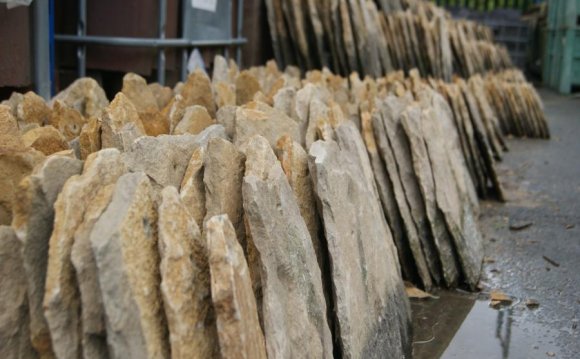
 The twentieth century writer J. B. Priestley typed of Cotswold rock that – “the the fact is that it has no color that can be explained. Even If the sun's rays is obscured together with light is cold, these wall space are still faintly cozy and luminous, just as if they understood the secret of keeping the lost sunlight of centuries glimmering about all of them.”
The twentieth century writer J. B. Priestley typed of Cotswold rock that – “the the fact is that it has no color that can be explained. Even If the sun's rays is obscured together with light is cold, these wall space are still faintly cozy and luminous, just as if they understood the secret of keeping the lost sunlight of centuries glimmering about all of them.”
If wool trade would be to an excellent level in charge of the prosperity regarding the Cotswolds, its personality is a result of a good amount of rock. The stone in question is Oolitic Limestone, formed during the Jurassic duration (206 to 144 million years back), when exactly what are today the Cotswolds were covered in a warm water. Similar to various other sedimentary rocks, limestone is generally consists of sand-sized grains (or ‘oolites’), almost all of which are skeletal fragments of marine organisms such as for example coral. Development starts with a seed, perhaps a shell fragment. Powerful currents clean this seed around on the bottom where it collects a layer of calcite from supersaturated water, and it is bound and countless variety of other oolites to produce the golden, practical stone that into the Cotswolds is everywhere beneath one’s foot.
The colour associated with rock varies in accordance with in which it absolutely was quarried. In a lot of the northern the main Cotswolds the stone is a rich honey color, which, while you go south towards Bath, becomes creamier and greyer. The end result, especially in the north, is mesmerising. To feed these villages on a sunny day in-may would be to enter a world that seemingly have been fabricated for a fairy-story. Thus, the Cotswolds do have more protected or ‘listed’ structures than just about any various other area in the united kingdom.With rock noticeable everywhere that guy trod, and in a landscape to some degree denuded of woods because of the vast herds of sheep that grazed the mountains, it was natural to begin building along with it in the Middle Ages. It is therefore that Cotswold villages – hundreds upon a huge selection of them – are entirely built of rock, which, using its gorgeous colouring, brings into the region a peculiarly attractive luminosity.
Specific quarries were singled-out for significant projects. From Taynton, near Burford, large quantities of creamy rock ended up being transported to Oxford for use on its colleges and soon after in construction of Eton university, Windsor Castle and Blenheim Palace. The quarries at Corsham provided the stone utilized in the building of Bath, whilst rock from Minchinhampton was utilized for the Houses of Parliament hence from Leckhampton was always build Cheltenham.
Due to the onerous building regulations in a preservation location, you can still find a great number of quarries in your community, extracting and working the stone for repair works and for the construction of stone walls and brand new structures, which usually need to be built of limestone with matching roof pitches of sixty levels, the pitch required to guarantee movement of water from what exactly is a porous rock.
 In a Cotswold household, almost everything is made out of the rock, such as the roofing tiles. Whenever in past times virtually every village had a quarry of some kind, blocks would be cut in winter months, which will after that, in freezing circumstances, split and open like oyster shells, become prised apart and put aside to be utilized as roofing tiles. On top itself, a wooden framwork is crafted as well as the tiles, via a hole pierced at their weakest point, hung regarding the battens.
In a Cotswold household, almost everything is made out of the rock, such as the roofing tiles. Whenever in past times virtually every village had a quarry of some kind, blocks would be cut in winter months, which will after that, in freezing circumstances, split and open like oyster shells, become prised apart and put aside to be utilized as roofing tiles. On top itself, a wooden framwork is crafted as well as the tiles, via a hole pierced at their weakest point, hung regarding the battens.
Apart from the houses, farm structures and churches, the other ubiquitous rock function may be the drystone wall, which creates an universal tracery across the area. We come across these wall space as a lovely adjunct to the personality of the Cotswolds but, although time consuming to construct, they have been extremely useful if well-constructed, because they are durable and hard-wearing. To build all of them well needs skill, because although Cotswold rock, becoming soft, is not difficult to operate in contrast to rock in other regions where drystone wall space are employed, it is also porous thin construction must adapt to specific requirements.
The fundamentals contains a trench ten to twenty centimetres deeply, with respect to the surface. Large rocks, their size operating over the width regarding the wall surface, are placed from the edges for the trench to realize an even, company base, that rise two synchronous towers of rock, gradually tapering towards each other for the sake of stability. At intervals, ‘through’ stones straddle the two, to help keep the bind. Pinning stones tend to be wedged in internal edges of outside stones to generate a tiny amount of autumn towards external face of the wall surface, hence making certain rainwater, which could lead to frost harm, is shed swiftly to your surface. Involving the two towers, small stuffing stones pack the gap. Finally, the wall is crowned by huge coping stones, guaranteed often nowadays with mortar.










